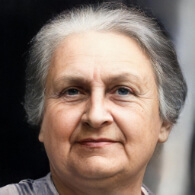Sound Games (Montessori)
In Montessori education, Sound Games are activities designed to enhance children's phonemic awareness — the understanding that words are made up of separate sounds. Sound games, which often start from around two years old or as soon as the child speaks fluently, facilitate children's analysis of sounds in words. A common example of this in English-speaking environments is the nursery game "I Spy," where the sound of the letter, not the letter name, is emphasized.[1]
Montessori Quotes
- "The only language men ever speak perfectly is the one they learn in babyhood, when no one can teach them anything!"[2]
- "The development of language is part of the development of the personality, for words are the natural means of expressing thoughts and establishing understanding between people."[3]
Research and Critiques
- Pros: The use of sound games in Montessori education has been praised for enhancing children's language development, improving their phonemic awareness, and facilitating early reading skills.[4]
- Cons: Critics might argue that focusing predominantly on sounds might limit children's understanding of the complexity of language, including aspects such as semantics, syntax, and pragmatics. There might also be challenges in applying the sound game technique to languages that aren't phonetic.[5]
Comparisons to Other Methods
While phonics-based approaches are common in many educational systems, the use of sound games in Montessori education is distinctive in its early emphasis and game-based approach to phonemic awareness.[6]
See Also
Glossary of Montessori Terms
The Glossary of Montessori Terms is a collection of specific terms and vocabulary that are related to the Montessori method of education, primarily focusing on the theory and practice for children aged 3 to 6. The jargon used by Montessori educators offers a unique insight into child development as discussed by Maria Montessori. The 'Montepedia Glossary of Montessori Terms' originated from a glossary that was compiled by the late Annette Haines from the Montessori Training Centre of St. Louis, at the request of Molly O'Shaughnessy from the Montessori Centre of Minnesota. The reason behind the creation of this glossary was to supplement O'Shaughnessy's lecture at the Joint Annual Refresher Course that took place in Tampa, Florida, in February 2001.[7] The glossary has since been expanded and updated with additional 'Montessori Terms'.
- 3-Hour Work Cycle
- Absorbent Mind
- Adaptation
- Adolescence
- Albums
- Advisor
- Analysis of Movement
- Casa dei Bambini
- Children of the Earth
- Children's House
- Choice
- Classification
- Concentration
- Concrete to Abstract
- Control of Error
- Coordination of Movement
- Cosmic Education
- Creativity/Imagination
- Cycle of Activity
- Development of the Will
- Deviations
- Didactic Materials
- Director
- Discipline from Within
- Earth Child
- Elementary Classroom
- Erdkinder
- Exercises of Practical Life
- False Fatigue
- Freedom of Choice
- Freedom within Limits
- Grace and Courtesy
- Great Stories
- Ground Rules
- Guide
- Help from Periphery
- Human Tendencies
- Imagination
- Independence
- Indirect Preparation
- Indirect Presentation
- Isolation of a Difficulty
- Intrinsic Motivation
- Job
- Kinderhaus
- Language Appreciation
- Language Acquisition
- Learning Explosions
- Materials
- Materialised Abstractions
- Mathematical Mind
- Maximum Effort
- Mixed Ages
- Montessori Materials
- Nido
- Montessori Materials
- Normalization
- Obedience
- Peace
- Personality
- Planes of Development
- Points of Interest
- Practical Life
- Phonemic Awareness
- Phonics Instruction
- Phonological Awareness
- Prepared Environment
- Presentation
- Primary Classroom
- Psychic Embryo
- Reading Comprehension
- Repetition
- Respect
- Self-Discipline
- Self-Regulation
- Sensitive Periods
- Sensorial Materials
- Simple to Complex
- Socialization
- Society by Cohesion
- Sound Games
- Three-Hour Work Cycle
- Valorisation
- Vocabulary Enrichment
- Work
Please help to translate this page into your local language
References
- ↑ Montessori, M. (1964). The Montessori Method. Schocken Books.
- ↑ Montessori, M. (1912). The Montessori Method. Frederick A. Stokes Company.
- ↑ Montessori, M. (1949). The Absorbent Mind. Clio Press.
- ↑ Lillard, A. (2017). Montessori: The Science Behind the Genius. Oxford University Press.
- ↑ Mooney, C. (2000). Theories of Childhood: An Introduction to Dewey, Montessori, Erikson, Piaget, and Vygotsky. Redleaf Press.
- ↑ Thayer-Bacon, B. J. (2017). Maria Montessori, John Dewey, and William H. Kilpatrick. Education and Culture, 33(2), 31-57.
- ↑ Haines, A. (2001). Glossary of Montessori Terms. Montessori Training Centre of St. Louis.
